How to improve interdisciplinary collaborations: lessons learned from scientists studying team science
Suzanne Webster ·I recently had the opportunity to attend the International Science of Team Science Conference in Galveston, Texas, from May 21-23. This conference was unique in that it convened researchers and practitioners from all professions and academic backgrounds who share the goals of "understanding and enhancing the processes and outcomes of collaborative, team-based research." As an interdisciplinary scholar who is interested in collaborative learning and science engagement, I was excited to receive feedback on my own research and learn from other academics who work in interdisciplinary spaces.
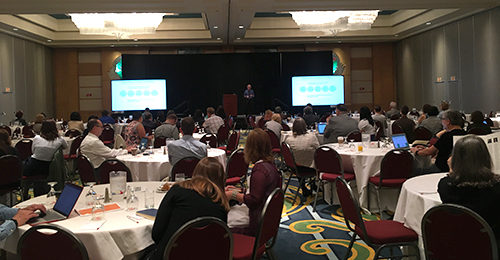
The conference program was packed with workshops, keynotes, and paper sessions, and I learned a great deal from the other presenters. Here are some of their recommendations for scientists looking to improve their interdisciplinary collaborations:
1. Team up with the right people
On the most basic level, scientists working on teams should be cautious of challenges that come with being "steeped in expertise," and be willing to integrate their thoughts with their teammates' ideas. Participants should also possess a variety of social skills, such as negotiation and social perceptiveness. The most successful teams also encompass a moderate degree of deep-level diversity (values, perspectives, cognitive styles) and include women in leadership roles.
2. Start off on the right note
Take some time before beginning a team task or project to make sure everyone is on the same page. Many teams, including surgical teams and pilots, use checklists to ensure that an activity starts (and ends) successfully. For new science teams, a basic checklist could make sure that everyone knows 1) each other, 2) the details of the project, and 3) their role on the team. From personal experience as a student, I can add that my most engaging and productive science courses all built in ample time at the start of the semester for a detailed round of introductions and a syllabus walk-through.
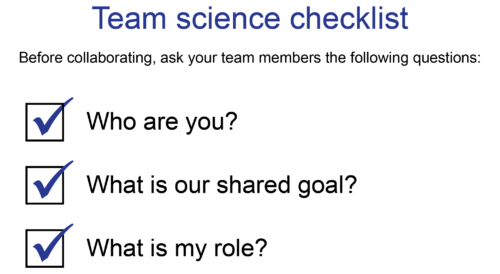
3. Practice self-awareness as a leader
There are seven dimensions of competent leaders. You don't need to be good at all of them, but it is important for everyone on a team to understand their own leadership style! Be transparent with others and yourself about where your strengths and weaknesses lie, and surround yourself with teammates who excel in areas you do not.
4. Employ different styles of collaboration to balance efficiency and integration
Sports can help us conceptualize different forms of collaboration. Pooled collaboration involves teammates simultaneously, but separately, contributing to a team task (gymnastics). Sequential collaboration involves a specified order of contribution, where one person's output becomes the next person's input, until the team completes the task (football). Reciprocal collaboration involves teammates contributing and communicating back and forth to complete a task (basketball). Science teams should adopt whichever collaborative structure is most appropriate for their project.
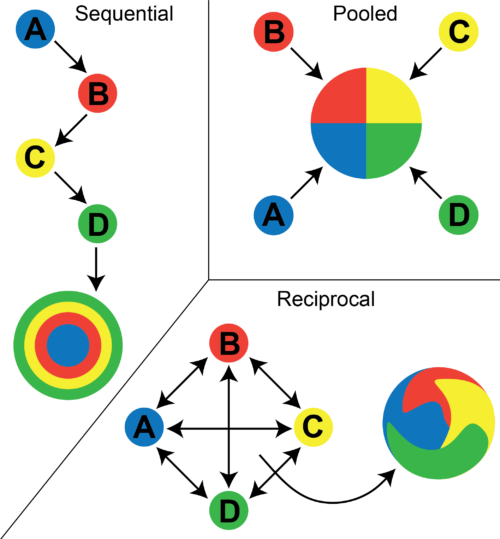
5. Go beyond avoiding jargon to develop a shared understanding
Interdisciplinary translation is a process that promotes understanding between scientists who speak different 'disciplinary languages.' When working on a team of scientists with different epistemological backgrounds, always bear in mind that each teammate possesses their own 'thought world,' or set of perspectives and experiences. When working on interdisciplinary teams, of course scientists must clarify disciplinary terms that others might not know, but less obviously, scientists must also make sure that their shared words have shared meaning (e.g. culture, diversity, bias, objective).
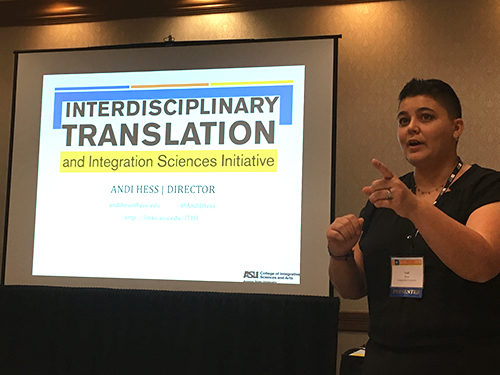
6. Use visualizations as translation tools
Science teams can create and discuss interactive visuals to facilitate analytical thinking, knowledge integration, and data exploration. Visualizations, such as conceptual diagrams, can function as boundary objects between teammates who possess different perspectives or expertise. A visualization can also serve as a "great equalizer" because teams can use it to collapse hierarchies and layer information in a way that creates a more egalitarian structure where all ideas are represented.

7. Do not avoid conflict—it's inevitable and it can be healthy!
Learn how to express and resolve conflicts effectively. Be specific about the subject of the disagreement and your position on the matter, and express conflict directly to the antagonist, rather than through third party. Avoid high-intensity behaviors that are offensive (e.g. undermining) or defensive, (e.g. stonewalling). Healthy debate can actually energize a team because it can be encouraging to collaboratively move towards a solution.

8. Share knowledge and advice
Effective teams have more communication and more equal communication. Social network analyses of successful teams show teammates learning from each other and forming close relationships with several other teammates (high network density and centrality). Avoid the "star model," which signifies an underlying cultural understanding that there is one lone genius leading the team. This top-down model causes teams to miss out on valuable questioning and input flowing from the bottom. Instead, develop collective cognitive responsibility, where success of the group effort is distributed among members and not concentrated in a single leader.
9. Build in "alone time" to maximize team creativity
The most creative team ideas do not emerge within a single meeting. Ideation in team science should be longitudinal, and oscillate between convergent and divergent stages. Teammates should have time to converge and deliberate and generate transformative ideas as a group, and then also have an opportunity to reflect on the ideas and let them marinate before the team reconvenes. The interplay of these opportunities discourages teams from settling on "mean ideas" that represent a snapshot agreement, and instead makes ideas and teams stronger and more creative.

10. Think about collaboration as a scientific virtue
Teamwork makes the dream work, but it is not always easy. When the going gets tough, keep yourself motivated by donning a philosophical hat and reminding yourself that collaboration makes you flourish as a scientist. According to philosopher Dr. Stephen Crowley, we can learn from Aristotle's teachings and think about collaboration as virtuous "scientific friendship." Virtuous friendship does not stem from utility (they have something we need) or pleasure (we like them), but instead from a drive to be a good person and support others' greater achievements. Team scientists have an "interest in 'science-ing' with others because it contributes to science excellence" and should pride themselves on their determination to "work with other scientists because it makes everyone's science more awesome."
The SciTS 2018 conference was a wonderfully unique experience and I am honored to have been a part of it and excited to join this dynamic community. To wrap up this blog, I will share an anecdote from the conference that I feel encapsulates my experience.
At the start of her workshop on the first day of the conference, Andi Hess asked each participant to introduce themselves by first sharing their educational training and then describing their current career. Attendees brought a wealth of knowledge to the room, with formal training in an enormous variety of disciplines, including sociology, public health, music, teaching, business, physics, and medicine. Additionally, almost everyone in the room smiled as they described a current position that differed from their disciplinary training. Several people joked that they "joined the dark side" when they first began to merge natural and social sciences, research and administrative duties, and academia and practice. I felt very inspired after hearing so many stories of drifting transformations towards more interdisciplinary spaces and identities that felt "more fulfilling." After the introductions, one of the participants addressed the room and said, "Can I just say for the first time, I feel at home?" I couldn't agree more.
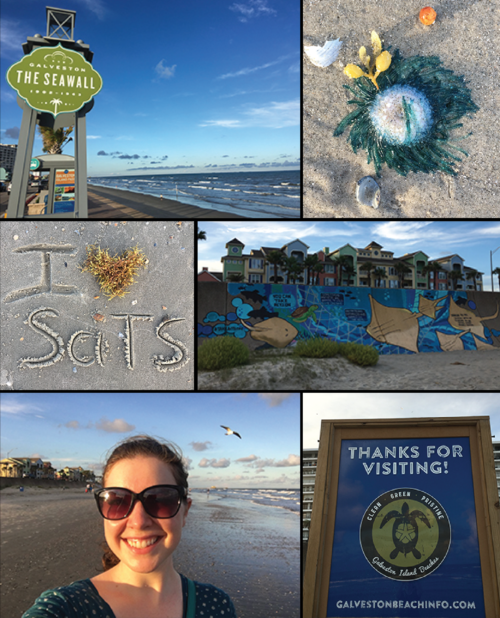
My travel to this conference was jointly funded by IAN and the MEES Debbie Morrin-Nordlund Memorial Travel Award. Thank you for your support!
About the author
Suzanne Webster
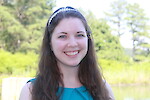
Suzi Webster is a PhD Candidate at UMCES. Suzi's dissertation research investigates stakeholder perspectives on how citizen science can contribute to scientific research that informs collaborative and innovative environmental management decisions. Her work provides evidence-based recommendations for expanded public engagement in environmental science and management in the Chesapeake Bay and beyond. Suzi is currently a Knauss Marine Policy Fellow, and she works in NOAA’s Technology Partnerships Office as their first Stakeholder Engagement and Communications Specialist.
Previously, Suzi worked as a Graduate Assistant at IAN for six years. During her time at IAN, she contributed to various communications products, led an effort to create a citizen science monitoring program, and assisted in developing and teaching a variety of graduate- and professional-level courses relating to environmental management, science communication, and interdisciplinary environmental research. Before joining IAN, Suzi worked as a research assistant at the Marine Biological Laboratory in Woods Hole, MA and received a B.S. in Biology and Anthropology from the University of Notre Dame.
Next Post > NPS Spotlight on Natural and Cultural Resources Workshop
Comments
-
Mark magee 8 years ago
I very much enjoyed reading this. As a person whose background is more business than science, i see complete transferrability of these ten recommendations to that world. In particular the virtuous friendship (Aristotle) concept , and its highlighting of underlying motivation rang true with me. So glad this conference made you and ithers feel at home. Not suprising though that a personalized path /mission coupled with being surrounded by those who value multidisciplinary collaboration would give rise to that feeling.
-
Anton Gorlin 8 years ago
Great article! I like your visuals, the forms of collaboration diagram and the directness/intensity chart, very informative.

